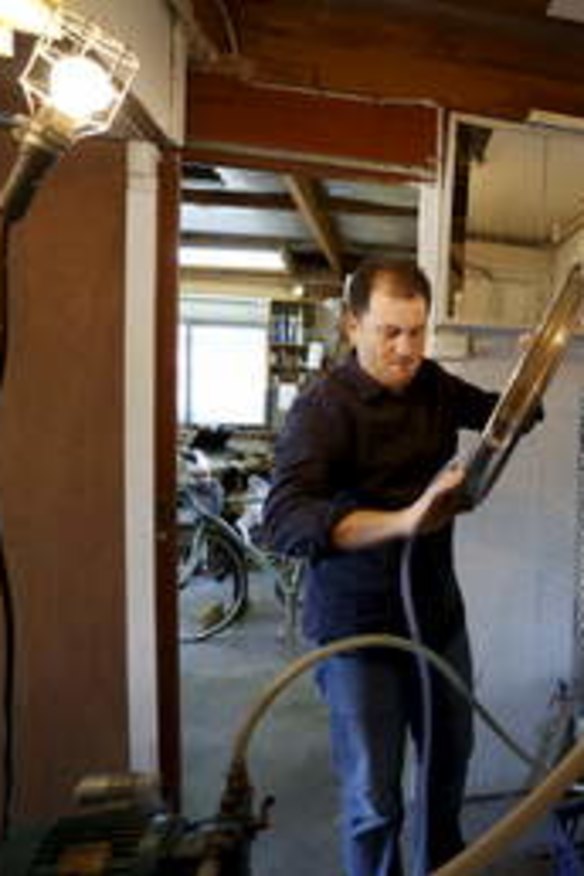Migrant communities keep winemaking tradition alive

Dario Sommero thought being forced to crush grapes in a concrete tank in his family's backyard as a child was enough to make him hate winemaking for life.
"My dad built this concrete tank, threw me in in my undies and made me crush all the fruit," Mr Sommero, a child of Italian immigrants, said. "The little spikes cut me and I was stained purple. It was a disgusting feeling."
When his father died in 2001, Mr Sommero, then 28, had to decide the fate of the pressers, demijohns and other winemaking gear left behind. His choice to keep the tradition going also determined that winemaking stemming back to his ancestors in Italy would continue.
It's a question increasingly faced by Mr Sommero's friends and other Australian-born sons and daughters of European immigrants whose passion was to make their own food and plonk.
Sydney's Italian, Greek and other migrant communities have produced homemade wines for more than half a century, and the scale of production is huge. In March and April, at least 500 tonnes of wine grapes were sold through the Sydney markets translating into half a million bottles of wine being produced in suburban sheds, garages and cellars this year. And that's a conservative estimate as the figure excludes vignerons who travel to vineyards or cultivate grapevines in their backyard.
Mr Sommero decided to learn how to make wine, a great relief for his mother who relied on homemade reds for her cooking. "She could use our own red wine for cooking rabbit and putting in sauces again," he said. "I'm making the wine in the exact spot my dad did."
Earlier this year, he hauled 500 kilograms of sangiovese and merlot grapes from Mudgee in his 1990 Nissan ute to his mother's home in Concord.
Other winemakers buy their grapes from sellers such as South Australian grape grower Alex Kypreos at the Sydney Markets.
Mr Kypreos undertakes the 2600-kilometre trek to and from Sydney 10 times over the grape season to sell 100 tonnes of grapes. He offers 10 varieties, including shiraz, cabernet sauvignon and sultana in 20-kilogram boxes.
"They all buy the grapes to make wine at home, and most are European," he said. "I've noticed more Chinese people making wine recently."
Maria Testa, owner of wine equipment seller Merilux Paint and Paper in Haberfield, noticed the second generation began to account for more than half her customers last year.
''They come in with their father or uncles to learn what to do. Some come in by themselves saying they've been left with all this equipment and need help,'' she said. ''They're from Italy, Yugoslavia, Germany, Russia, so many places.''
Aldo Gortan, president of the Sydney Amateur Winemakers Club, has made wine in his home in Panania for more than 20 years.
The Italian-Australian offers a wine acidity testing service during grape season and has noticed a growth in the number of younger winemakers. "When they're young they're so busy but as they get older they have more time to devote to making wine," he said.
On Wednesday night Mr Gortan visited his club mates in a garage tucked under a nondescript block of flats in Hornsby. Nino Sanzari, 50, and Paul Borkowski, 55, were testing and tasting fermenting juice from their eight stainless steel tanks.
As they swirled glasses of young sangiovese and shiraz, they said the younger generation had a lot to learn about winemaking. The three golden rules, they said, were cleanliness, patience, and the use of only quality fruit.
- More:
- Drinks
